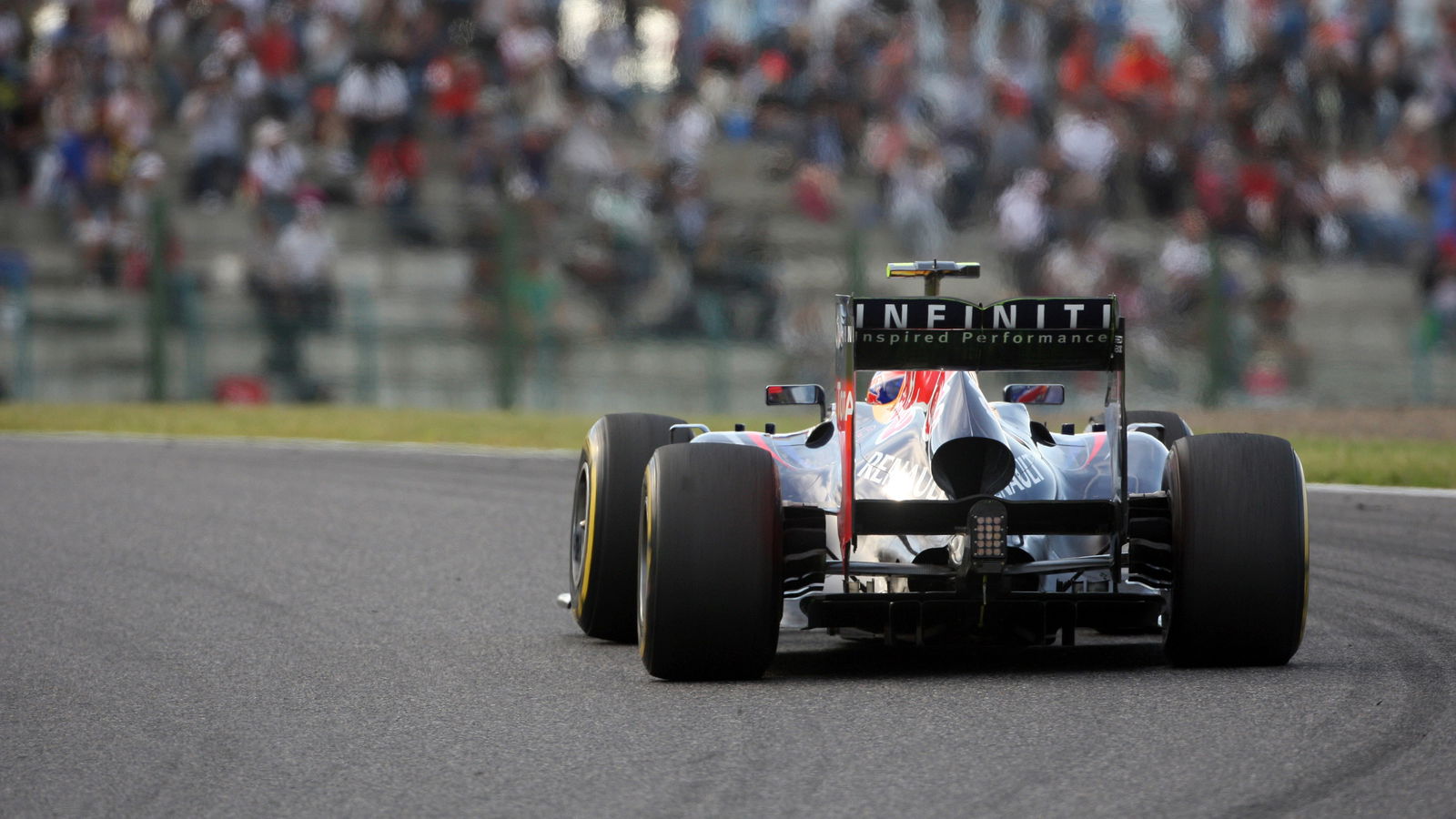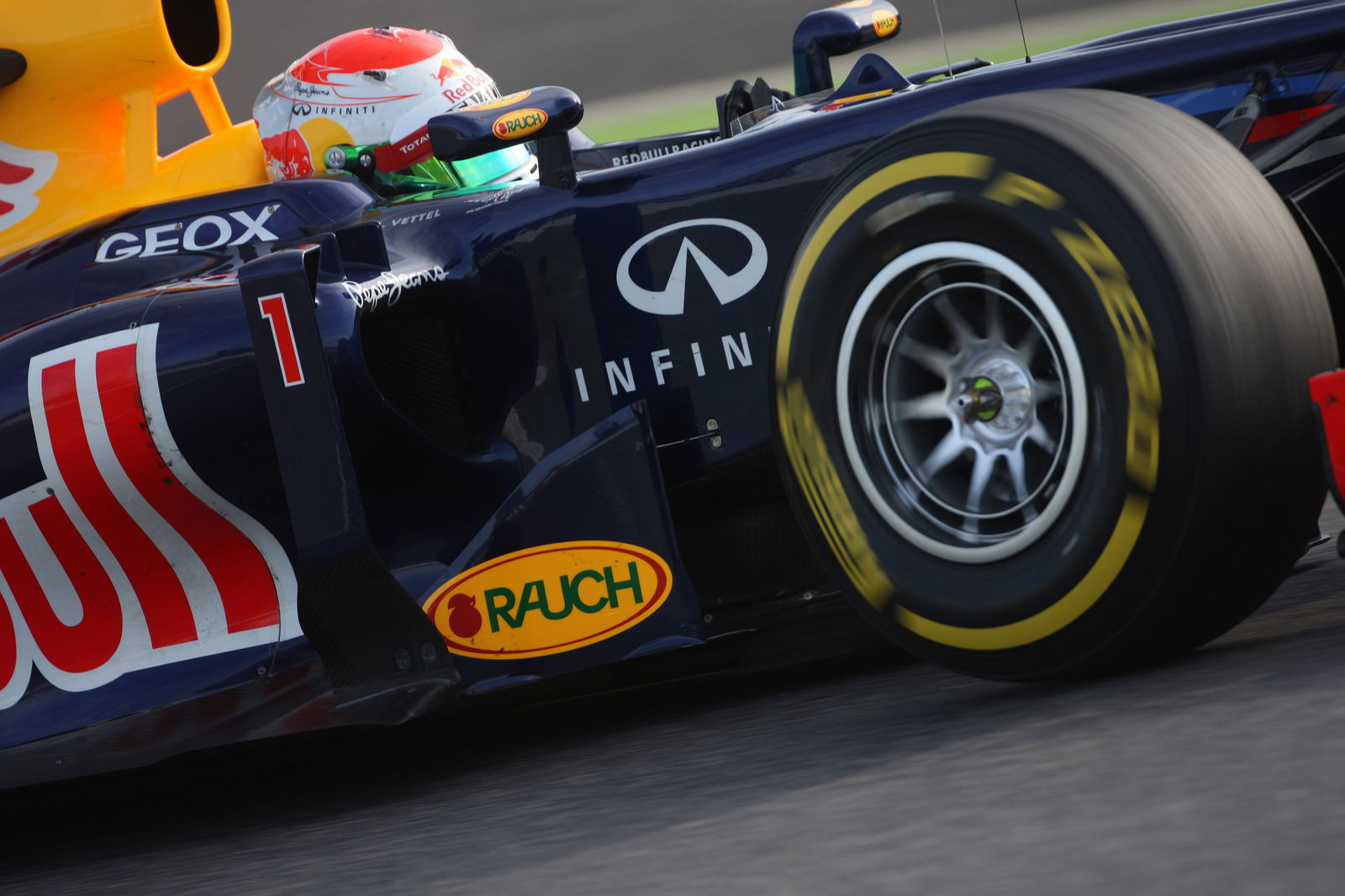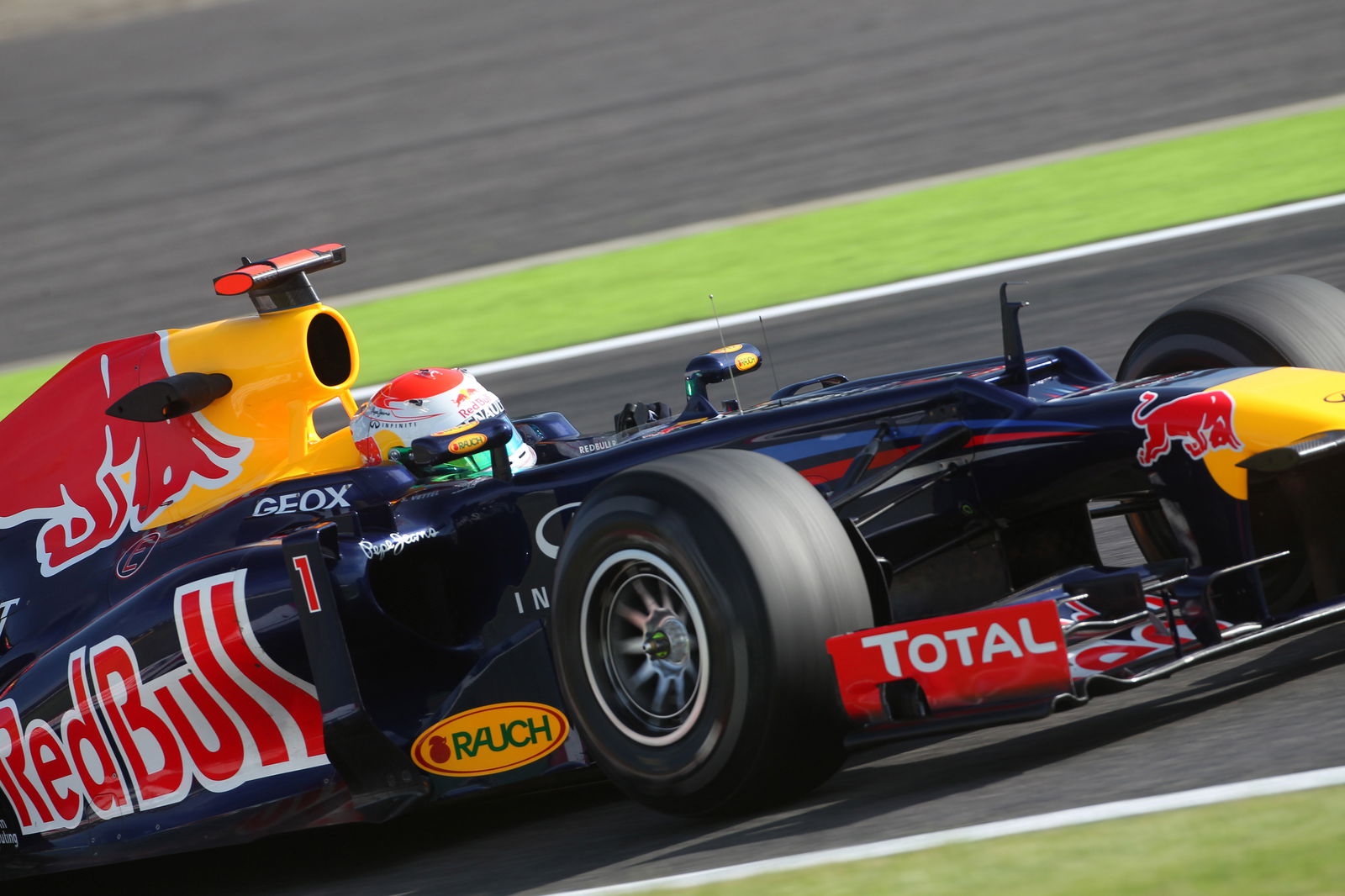Is Red Bull running double DRS?

Red Bull's sudden return to form has raised a few eyebrows in the F1 paddock but, in the sport's ever-evolving world, the explanation could be that RB8 has now been fitted with the team's own version of 'double DRS'.
As with F-ducts and hot and cold blown diffusers in past seasons, 'double DRS' has become the technical buzzword of 2012, with Mercedes and Lotus the most notable pioneers of systems designed to increase the performance of their cars. Neither appears to have perfected the technology, with the Three Pointed Star not yet matching the likes of Red Bull, McLaren and Ferrari on a regular basis, and Lotus still waiting to give it 'device' its full race debut after being stymied by a lack of dry weather testing opportunities in free practice earlier in the season.
Red Bull, meanwhile, appeared to have slipped behind McLaren in the pace race over recent rounds and, Sebastian Vettel's Singapore victory - at an event where he matched Lewis Hamilton throughout practice - notwithstanding, was not expected to challenge the Woking squad around Suzuka. However, despite Hamilton and team-mate Jenson Button featuring at the top of the times early in the weekend, Vettel and Webber were there or thereabouts in practice, before going on to claim a comfortable 1-2 in qualifying.
Neither driver alluded to anything specific when asked why they went so well at Suzuka but, according to Germany's Auto Motor und Sport, the secret could lie in RBR developing its own version of double DRS, which has allowed the RB8 to overcome its previous failings through fast corners and reaching the sort of top speed its rivals were achieving. Although better tyre management usually allowed Red Bull to make up for some of its practice and qualifying weaknesses when it came to race day, the damage to its chances had often been done.
With Suzuka falling into the same sort of category as Sepang and Barcelona, where the RB8 struggled to match the performance of its rivals, the sudden return to front-running form caught rivals on the hop, with Vettel not only going on to secure his fourth consecutive pole at the classic circuit, but also leaving McLaren in his wake, and the Ferrari of championship leader Fernando Alonso as much as a second adrift.
Although Red Bull is renowned for continually evolving its cars - not always comfortably within the rules, although the latest iteration of its front wing apparently sailed through the stringent pre-race FIA checks in Japan - double DRS was not thought to have been on the agenda. However, Vettel and Webber were there at the top of the times through the opening sector of the Suzuka lap, which consists primarily of long and fast corners where the likes of McLaren would have been expected to excel, and were much closer to the top of the charts through the speed trap, not mixing it with the likes of HRT at the back of the pack.
Having studied images of the RB8 from early in the weekend, Auto Motor und Sport claims that there is evidence to suggest that Adrian Newey has indeed found a way to introduce double DRS to the car's specification. Reports emerging on raceday believe that, when the conventional DRS system is activated, the movement of the rear wing element - which has developed a broader edge - uncovers holes in the endplate in a similar manner to Mercedes' design. It is then thought that the air sucked in through the openings is channelled down to exits below the lowest element of the wing. This area was covered with a conspicuous amount of flo-vis paint during Friday and Saturday practice as the team attempted to verify the airflow.
The premise is that the system not only further reduces drag when in operation, thereby facilitating better top speeds, but also allowed RBR to run greater wing angles that would benefit its performance through faster corners. Obviously, the system is most beneficial during practice and qualifying, where DRS use is unlimited, but it has put Vettel and Webber at the front of the field on raceday and could, potentially, have allowed the German to steal a march in an increasingly close battle for the title.

